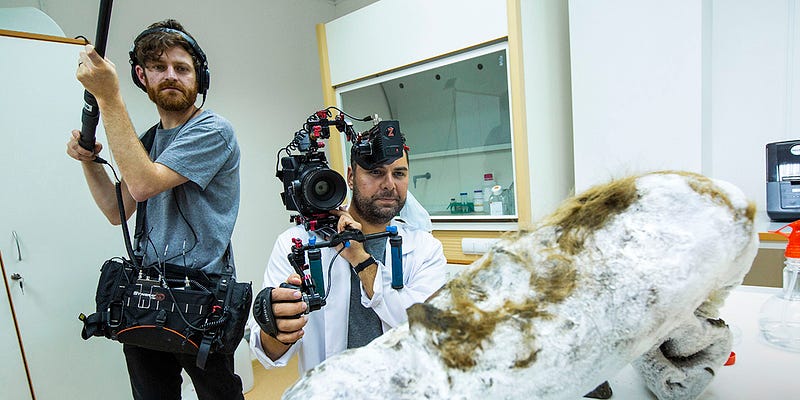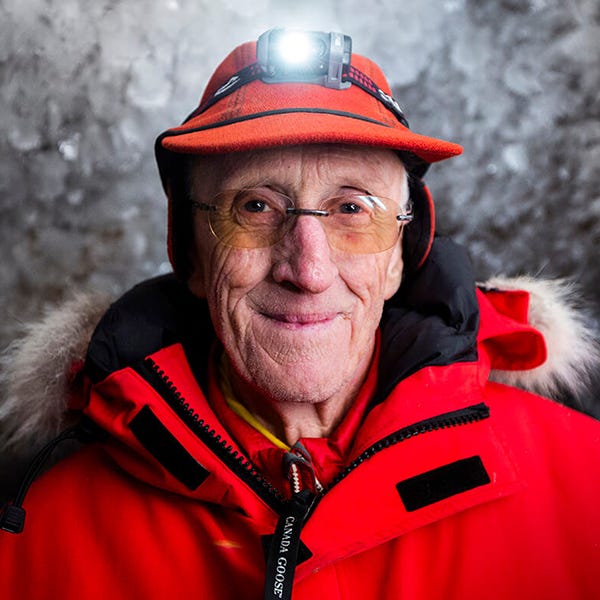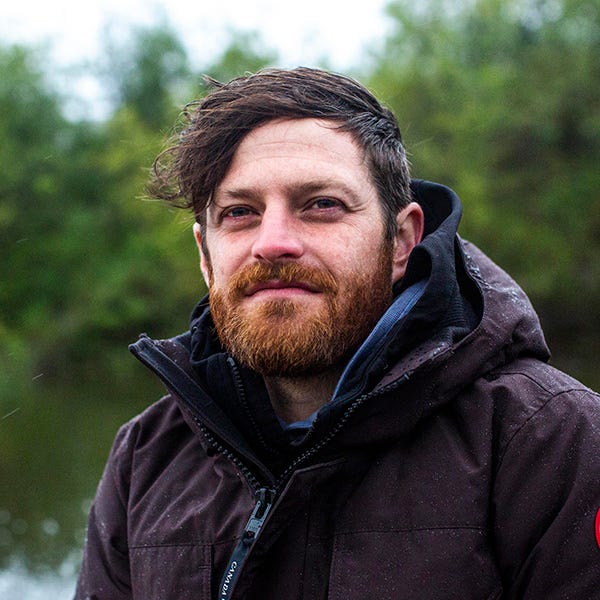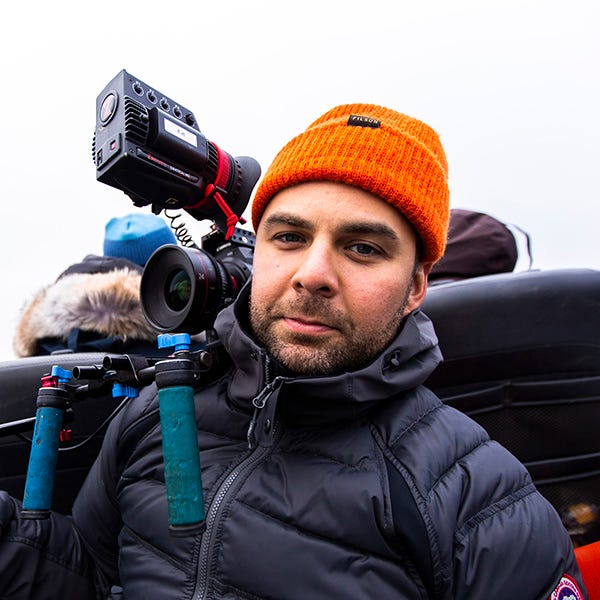Guest Post: SFFILM FilmHouse Resident Jason Sussberg on Redefining His Relationship to His Doc…
by Jason Sussberg
Guest Post: SFFILM FilmHouse Resident Jason Sussberg on Redefining His Relationship to His Doc Subject

LONG-TERM THINKING IN THE TIME OF A PANDEMIC
by Jason Sussberg
I was invited to be a FilmHouse resident at a time of profound change in my life. My directing partner David Alvarado and I just started our third indie feature film We Are As Gods, on the extraordinary life of Stewart Brand, editor of the counterculture’s bible The Whole Earth Catalog and president of the Long Now Foundation, whose mission is to nudge humanity to think longer term — 10,000 years to be exact. The film we made centers on Stewart’s biography and his most recent mission, which is to bring back extinct species using biotechnology. In January of 2018, only two months after we started developing this film, I became a dad, which nudged me personally to think longer term for my son’s future. I presumed having a FilmHouse residency at the time was perfect timing, as I wouldn’t be traveling too much during my FilmHouse tenure being a new dad and all. However, that ended up not being the case, since the film on Stewart took us to Europe, far Northern Siberia, and all over the country from Stewart’s boyhood cabin in Michigan to West Texas: the site of The Clock of the Long Now. The clock, built by the Long Now foundation, is a monument meant to last at least 10,000 years. It’s a massive mechanical artifact, larger than the Statue of Liberty, housed in the core of a mountain, and most importantly for us as filmmakers, it functions as the film’s ultimate scene that pretty much sums up Stewart’s life.

Since the pandemic de facto canceled the film’s release into the world, I’ve been reflecting on the raison d’etre of the clock. Our film explores the clock in two scenes, but the film’s main drama is about resurrecting extinct species. That said, it’s one chapter of Stewart’s life that deserves more time and exploration than we were able to accomplish in our 95-minute movie. The clock is a mythic icon and a true engineering feat — how does one build anything that is meant to function for 10,000 years? The mission of the foundation that Stewart envisioned back in the ‘90s was to counter civilization’s revved-up and “pathologically short attention span.” As Stewart sees it, civilization is incentivized to think and behave in the short-term. As Stewart’s friend and Long Now Foundation co-founder Brian Eno says, “Everybody was talking about the opinion poll in the paper tomorrow, or next week’s shareholder results, or at best the next election which was four years ahead. We now had all of this power and no concept at all of the future that we were going to be building with it. That was what the clock grew out of.” As Eno sees it, the clock is a provocation to get humanity to think longer-term and behave more responsibly. (As an aside, we had the pleasure of collaborating with Brian Eno on this movie, both as an interview subject and in that he created the beautiful, timeless, and indelible original score. Not farfetched to say that this is the highlight of my life as a filmmaker.)

Our film chronicles Stewart’s ability to make trippy thought experiments become culture shifting realities, starting first with the photograph of the whole Earth. After an insightful LSD trip, Stewart started an ad hoc campaign to provoke NASA into releasing a photograph of the whole Earth. Stewart thought that humanity would become more ecologically responsible if we could see how small, fragile, and alive the planet is. It worked — shortly after the campaign, NASA released the image of the whole Earth and that kicked off the modern environmental movement with the first Earth Day in 1970 — whose 50th anniversary we just celebrated this spring. The clock is intended to do what the photograph did for the green movement, but for time and responsibility. The hope is that the clock will last all 10,000 years, come nuclear war, asteroid, climate catastrophe, or pandemic.

The idea of the clock originated from his friend Danny Hillis, but Stewart literally wrote the book on it and the philosophy of long-term thinking. I read the book shortly after I graduated from college in 2004 and I was sold on the philosophy, though I’m sympathetic to the criticism and not naive to the controversy. I think humanity would act more responsibly to the planet and each other if we had a longer time frame in mind. At the time, my concern was environmentally motivated because of climate change. Obviously our COVID-19 reality has everyone thinking about how this could have been avoided, or at least ameliorated with less death and devastation. It’s my reasoned belief that had we been thinking long-term, governments, corporations, and large philanthropies across the globe would have been better prepared for a pandemic and mapped out several scenarios for recovery. We need to apply long-term thinking not just on an individual consumer level, but at large scale on a governmental and ecological level.
It’s comforting to think that the clock is ticking along somewhere in the desert and will live well beyond this current crisis and many more. Still under construction, the clock is born into the world at a moment when humanity is reminded that civilization is fragile and requires diligent maintenance. Civilization has only been around 10,000 years, which is a blink of an eye in geological time. Even when compared to the scale of our own species (250,000 years), civilization hasn’t been around that long.

Perhaps our next movie will just be on the Clock of the Long Now. If we are to survive as a global civilization and avoid nuclear winters, asteroids, mass extinctions, climate change, and pandemics, we need to think and behave long-term. For me, having a kid jolted me into thinking about the future, but it’s merely the near future of my son’s life and maybe his children (a weird thought since he’s barely two). In the final scene of the film, we see Stewart’s silhouette as he walks through a dark tunnel out of the mountain housing the clock. Over this imagery and sounds of Brian Eno’s score, Stewart says “Generations is a good way to think, but let’s go way longer than that. Once you are holding these longer time frames in mind, it starts to raise the question of what do you do on Monday? Does your behavior start to reflect this larger frame?”

Jason Sussberg is a San Francisco-based filmmaker focusing on art and humanity in the sciences. He started his career working in sports television as a producer and editor for the San Francisco Giants and Golden State Warriors. After receiving his MFA at Stanford University, he and filmmaking partner David Alvarado founded Structure Films, a science storytelling production company. They directed and produced The Immortalists (2014), Bill Nye: Science Guy (2017), We Are As Gods (2020 or whatever) as well as a slew of short documentaries that have broadcast on PBS, TED, BBC, Facebook Watch, and screened at prestigious international film festivals. He is a 2018 SFFILM FilmHouse Resident with this production.

David Alvarado is an award-winning documentary filmmaker with a passion for science, philosophy, and human rights. He is the son of a Mexican immigrant and although he dropped out of high school, his pursuit of filmmaking and his love of science helped him find a passion that changed his life forever. Today, he lives in Brooklyn, NY and works tirelessly to put science back in its rightful place in society.
For more information about SFFILM’s artist development programs, visit sffilm.org/makers.